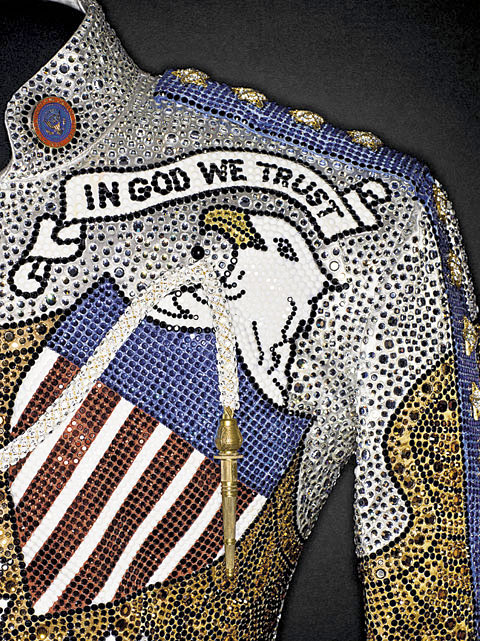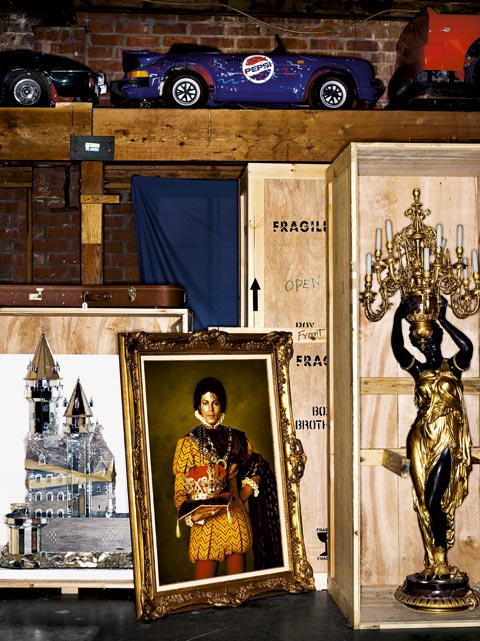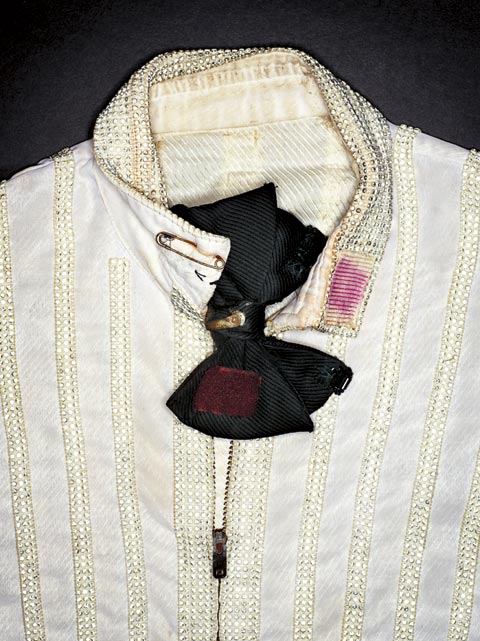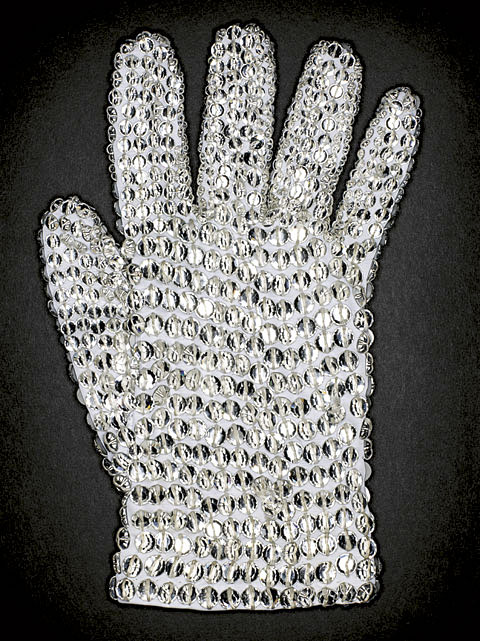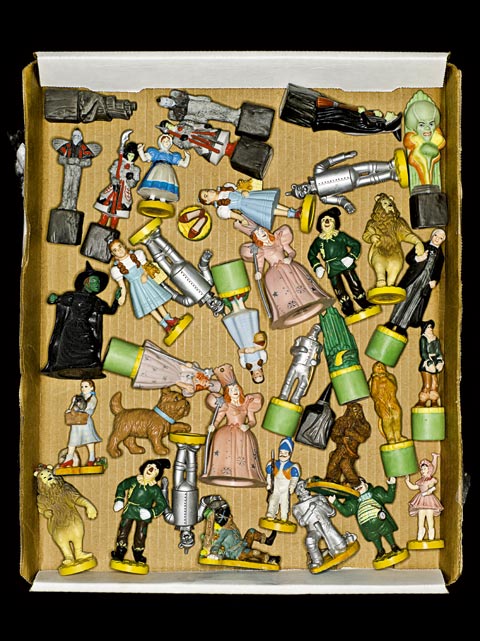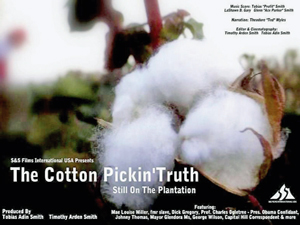"The Unspoken Alliance": New Book Documents Arms, Nuclear and Diplomatic Ties Between Israel and Apartheid South Africa

Israeli President Shimon Peres has denied reports he offered to sell nuclear weapons to apartheid South Africa when he was defense minister in the 1970s. On Sunday, the Guardian newspaper of London published top-secret South African documents revealing that a secret meeting between then-defense minister Shimon Peres and his South African counterpart, P.W. Botha, ended with an offer by Peres for the sale of warheads "in three sizes." The documents were first uncovered by senior editor at Foreign Affairs Sasha Polakow-Suransky, author of the new book The Unspoken Alliance: Israel’s Secret Relationship with Apartheid South Africa. [includes rush transcript]
Guest:
Sasha Polakow-Suransky, senior editor at Foreign Affairs and author of The Unspoken Alliance: Israel’s Secret Relationship with Apartheid South Africa.
Rush Transcript
This transcript is available free of charge. However, donations help us provide closed captioning for the deaf and hard of hearing on our TV broadcast. Thank you for your generous contribution.
Donate -
$25,
$50,
$100,
More...
AMY GOODMAN: As nuclear nonproliferation talks at the United Nations focus on the Middle East this week, we turn to new revelations about Israel’s nuclear weapons program and its close alliance with apartheid South Africa.
Israeli President Shimon Peres has denied reports that he offered to sell nuclear weapons to apartheid South Africa when he was defense minister in the '70s. On Sunday, the Guardian newspaper of London published top-secret South African documents revealing that a secret meeting between then-defense minister Shimon Peres and his South African counterpart, P.W. Botha, ended with an offer by Peres for the sale of warheads, quote, "in three sizes." The documents provide the first official written evidence that Israel has nuclear weapons, despite its policy of "ambiguity" in neither confirming nor denying their existence.
But the Israeli president's office has categorically rejected the accusations in the report and released a statement saying, quote, “Israel has never negotiated the exchange of nuclear weapons with South Africa. There exists no Israeli document or Israeli signature on a document that such negotiations took place."
Well, the documents published in the Guardian were first uncovered by senior editor at Foreign Affairs, Sasha Polakow-Suransky. He went through 7,000 pages of never-before-seen classified South African documents while researching his new book The Unspoken Alliance: Israel’s Secret Relationship with Apartheid South Africa.
For more on this story, we’re joined by Sasha himself. Sasha Polakow-Suransky joins us here.
Welcome to Democracy Now!
SASHA POLAKOW-SURANSKY: Hi. Thanks for having me.
AMY GOODMAN: Talk about these documents.
SASHA POLAKOW-SURANSKY: Well, there are four key documents involved in the Guardian story, and let me explain just a little bit about what each says.
The first is minutes from a meeting between high-level defense officials from Israel and South Africa on March 31st, 1975, during which they discuss several things, including the possible transfer of Jericho missiles. And they use vague language to discuss warheads in three different sizes. Now, the Israeli government is denying that its signature or any Israeli signature is on that first document. This is actually true. It’s minutes from a meeting between high-level officials.
However, the second document, the same day, from the chief of staff of the South African Defense Force, he sends a memo to his superiors talking about how wonderful Jericho missiles armed with nuclear warheads would be for South Africa’s defense strategy. And if you look through the archives, as I did, it’s the first time that you actually see this issue discussed. And it happens to occur on the same day.
Then, four days later, Shimon Peres and P.W. Botha sign a secrecy agreement governing all transactions in the military sphere between the two countries. Shimon Peres’s signature is on that document, dated April 3rd, 1975.
And finally, if you follow the story on through the late '70s and the early ’80s, you see that South Africa was only ever interested in Jericho missiles if they had a nuclear warhead on them. Various documents later on, as the two countries continued to cooperate in the sphere of medium-range missiles, show that South Africa only thought it was economical and useful for their defense force if these missiles were armed with nuclear warheads.
So, you put this all together the way that any journalist or any historian would, and it's very difficult to come to any other conclusion. It is an interpretation, but based on these four documents, you connect the dots, and it’s quite clear that the South Africans perceived that there was a nuclear offer on the table. As I say in the book and as the Guardian says, this deal never went through. However, the offer was perceived to be on the table, and the South Africans took it seriously enough to write a memo to the top officials in the military arguing how nuclear-armed Jerichos could help them.
AMY GOODMAN: And why didn’t the deal go through?
SASHA POLAKOW-SURANSKY: Well, there are various reasons, Amy. The South Africans thought that it was prohibitively expensive. And you have to remember they were also developing their own nuclear weapons program at this time. They were just getting off the ground. The Israelis already had them. And the South Africans thought, perhaps we can do this on our own without spending this sort of money on it.
And what’s interesting about the Guardian revelations is this is really just the tip of the iceberg. It’s not necessarily what I would have chosen as the most stunning revelation in this book, because what happened afterwards is there were deals that did go through. This one didn’t go through. But throughout the late '70s and the mid-1980s, these two countries were cooperating in South Africa on building missile technology that the South Africans intended to use for a second generation of their nuclear weapons. I have documents from 1984 from the South African Defense Force talking about how they have to go to Israel and meet all of the Israelis who are about to move down to South Africa and work on the missile testing range, because the Israelis had greater expertise in the field of rocketry, and these Israelis all needed cover stories. And so, the document from 1984 instructs South African officials to go and interview all of them and make sure that their cover stories are intact, so when a bunch of Israelis show up in a small seaside town in the middle of nowhere in South Africa, they have an excuse for being there.
AMY GOODMAN: What about the secret meeting in Switzerland in 1975?
SASHA POLAKOW-SURANSKY: So, on June 4th, 1975, a couple of months after the first documents that we discussed a minute ago, Peres and P.W. Botha meet in Switzerland, and they continue to discuss the same deal and, again, use vague language, such as "the proper payload," "warheads in three different sizes." This was always coded in these meetings. This is how people talk about such matters. It's when you connect the dots to other documents—and in the case of the first one, written on the same day—that you see the pattern and you see that the South Africans certainly thought that there was an offer on the table.
The question of whether Peres had authorization from Prime Minister Yitzhak Rabin is an interesting one. Peres has a long history as a foreign policy freelancer. He built Israel’s relationship with France in the 1950s, which was crucial for Israel’s own nuclear weapons program. And Peres did a lot of this behind the scenes as a mid-level official in the Defense Ministry, and he did not have the authorization of the Foreign Ministry or of his superiors. And so, this may be another instance of Peres acting on his own. But the key point is that the South Africans took it seriously. They perceived the offer as on the table. And that is what Peres has not responded to yet.
AMY GOODMAN: South Africa providing Israel with yellowcake uranium?
SASHA POLAKOW-SURANSKY: OK, well, another revelation in the book that the Guardian didn’t pick up on. Let me explain this one. It’s a little bit more complicated, but basically South Africa began to supply Israel with yellowcake uranium in 1961. South Africa has a great deal of natural resources, including uranium, and Israel needed it. It started in small amounts, and the shipments went to Israel. They were protected under bilateral safeguards, so not IAEA-style safeguards like we see today. This was an agreement between the two countries that the uranium would only be used for peaceful purposes. Between 1961 and 1976, the stockpile built up in Israel to about 500 tons of uranium.
The first part of this story is actually covered in Seymour Hersh’s book The Samson Option. What I do in this book is take it further. What happened in 1976 is the head of Israel’s scientific intelligence agency, called Lekem, its Hebrew acronym, he contacted the prime minister of South Africa and said, essentially, "We need this." And the South African prime minister—
AMY GOODMAN: He was...?
SASHA POLAKOW-SURANSKY: John Vorster—went to his minister of mines, Fanie Botha, and instructed him to release the safeguards on the uranium. Now, there was a controversy within the nuclear science community in South Africa, because many people saw this as a blatant act of proliferation and aiding the nuclear program of another country. However, the minister of mines flies to Israel in July 1976. This is just a few months after Vorster himself visits Israel.
And the Israeli government, in the last few days, has responded to my allegations, saying, "We do not see any documents on Israeli letterhead." I have documents on Israeli Ministry of Defense letterhead showing the itinerary of Fanie Botha in Israel in July 1976. Not only did he meet with Shimon Peres, he met with Prime Minister Rabin, the head of Israel’s nuclear research community, and various other top generals in the military. The press passed it off as a discussion over new mining ventures. But people discussing new mining ventures don’t meet with the prime minister and the defense minister.
AMY GOODMAN: And talk about the significance of Vorster.
SASHA POLAKOW-SURANSKY: Well, the significance of it is, is that Israel needed raw materials for its nuclear reactor at Dimona, and it had brought uranium in from Europe in the 1960s, but it was having trouble getting these resources. And South Africa had a lot of it, and a lot of it was already in Israel.
So what I did is I went to Fanie Botha a few years ago, when I was in South Africa, and I interviewed him about this. And I’d actually like to read to you his quotation, which confirms that he lifted the safeguards and that the Israeli government had wanted to use this. He was well into his eighties at the time, and he told me that his counterparts in Israel thought that the safeguarded yellowcake could be very useful to them. And I quote, "I didn’t sell it to them. I didn’t give it to them. But when I became minister, they had it. They couldn’t use it unless South Africa lifted them, the safeguards, so that’s what I did."
And then I asked him, "Do you feel that you may have been aiding the nuclear program of another country, perhaps furthering nuclear proliferation?" And his response was, "We worked together for some years. It was easy for friends to cooperate in this field."
AMY GOODMAN: And again, this was—the quote was of...?
SASHA POLAKOW-SURANSKY: Fanie Botha, the South African minister of mines in the mid-1970s. All of this came out in an in-camera trial that was kept classified in South Africa for many years. This leaked, and the transcript of the trial and the judge’s own description of what took place in the proceedings, which involved many top officials, including future president F.W. de Klerk, reveals what I just read to you, the basic outline of the case, and that the Israeli government had been funneling money to Fanie Botha in order to keep him in office until this deal went through. They wanted to keep him in his position as minister of mines, because they knew he was sympathetic to Israel, and they were afraid that this deal might not go through. The trial records, interviews with lawyers involved in the trial and the judge’s own judgment confirm that, through a middleman, the Israeli government funneled money to a South African government official in order to ensure that this deal went through.
AMY GOODMAN: We’re talking to Sasha Polakow-Suransky, senior editor at Foreign Affairs. His book is called The Unspoken Alliance: Israel’s Secret Relationship with Apartheid South Africa. You write, "Israel tested its own weapons and helped South Africa build highly advanced nuclear weapons delivery systems, long-range missiles, throughout the ’80s, at a secret South African testing range where hundreds of Israelis were employed."
SASHA POLAKOW-SURANSKY: Yes. That’s what I was describing earlier with this 1984 document. This lasted almost up until the transition to democracy in South Africa. As late as 1989, the two countries were still cooperating in this field.
And interestingly, it was George H.W. Bush who started to crack down and eventually put an end to it. What happened in 1989 is Soviet and US satellites picked up images of missiles being launched off the coast of South Africa, from this testing range I described earlier. And the plume, the exhaust trail from these missiles, matched the Israeli Jericho exactly. So CIA and Defense Intelligence Agency documents that have been declassified in Washington reveal that everyone in the US intelligence community immediately saw this as a signature of an Israeli system or a technology that had been transferred to South Africa or that there had been such close cooperation that the technology was essentially identical.
And so, at this point, Bush 41 reprimands Israeli Prime Minister Yitzhak Shamir, because this is two years after Israel has imposed its own sanctions against South Africa. Israel had vowed to sign no new arms contracts in 1987 after the US government passed sanctions against South Africa and threatened to cut off military aid to any other country in the world that continued to sell arms to South Africa. Two years later, missiles are being launched off of the South African coast that look identical to Israeli missiles.
And so, after 1989 and this discovery, the relationship begins to wind down. And by the time the transition begins in South Africa and Nelson Mandela is released from prison and eventually becomes president in 1994, you see everything slowly disappear. And by 1994, there are no longer high-level military delegations going to Israel. The highest-level South African delegation at that point is the boxing team, and they’re going on a tour of Israel.
AMY GOODMAN: Talk about the Israeli generals, the relationship being so close that they would take South Africans to the front lines of the Lebanon war in 1982, the Israeli invasion of Lebanon.
SASHA POLAKOW-SURANSKY: That’s correct. That’s correct. The South African General Constant Viljoen did travel into Lebanon with Israeli officials at that time. According to the documents in my possession, he did so before even Americans were invited by the Israelis to observe what the South Africans did.
The other thing worth noting is that Constant Viljoen also went to the Occupied Territories in 1977, and he marveled at the Israeli checkpoint system and, quite frankly, was jealous of it. And he wrote in a report to the South African defense minister, "The thoroughness with which Israel conducts this examination is astonishing. At the quickest, it takes individual Arabs that come through there about one-and-a-half hours. When the traffic is heavy, it takes from four to five hours." And this was part of a document admiring Israel’s internal security apparatus.
AMY GOODMAN: You have an interesting aspect of this story, which is the ADL in the United States, the anti-discrimination committee. And we only have a minute to go.
SASHA POLAKOW-SURANSKY: Sure.
AMY GOODMAN: Then we’re going to post the rest of the interview on the website. What about the American—the Anti-Defamation League?
SASHA POLAKOW-SURANSKY: Well, essentially, during the late 1980s and early 1990s, the Anti-Defamation League employed a man named Roy Bullock, who was also on the payroll of South African intelligence. And this man was acting on behalf of South African intelligence and the ADL to infiltrate anti-apartheid groups in the Bay Area. And FBI files investigating the espionage involved came out later confirming that he was essentially providing the same information to both the ADL and the South African government intelligence services, because they were concerned that the anti-apartheid movement in the US was becoming very strong, and the Israelis and pro-Israel organizations in the US were afraid that this was tarnishing Israel’s international image.
AMY GOODMAN: Finally, we only have fifteen seconds, but this history that was going on between Israel and South Africa, this relationship supporting the South African apartheid regime?
SASHA POLAKOW-SURANSKY: Yes, it was vital. And I would argue that it prolonged the life of the apartheid regime in South Africa. It was a vital link.
AMY GOODMAN: We’re going to leave it there, Sasha Polakow-Suransky—we’ll continue at democracynow.org—senior editor at Foreign Affairs, his new book, The Unspoken Alliance: Israel’s Secret Relationship with Apartheid South Africa.




